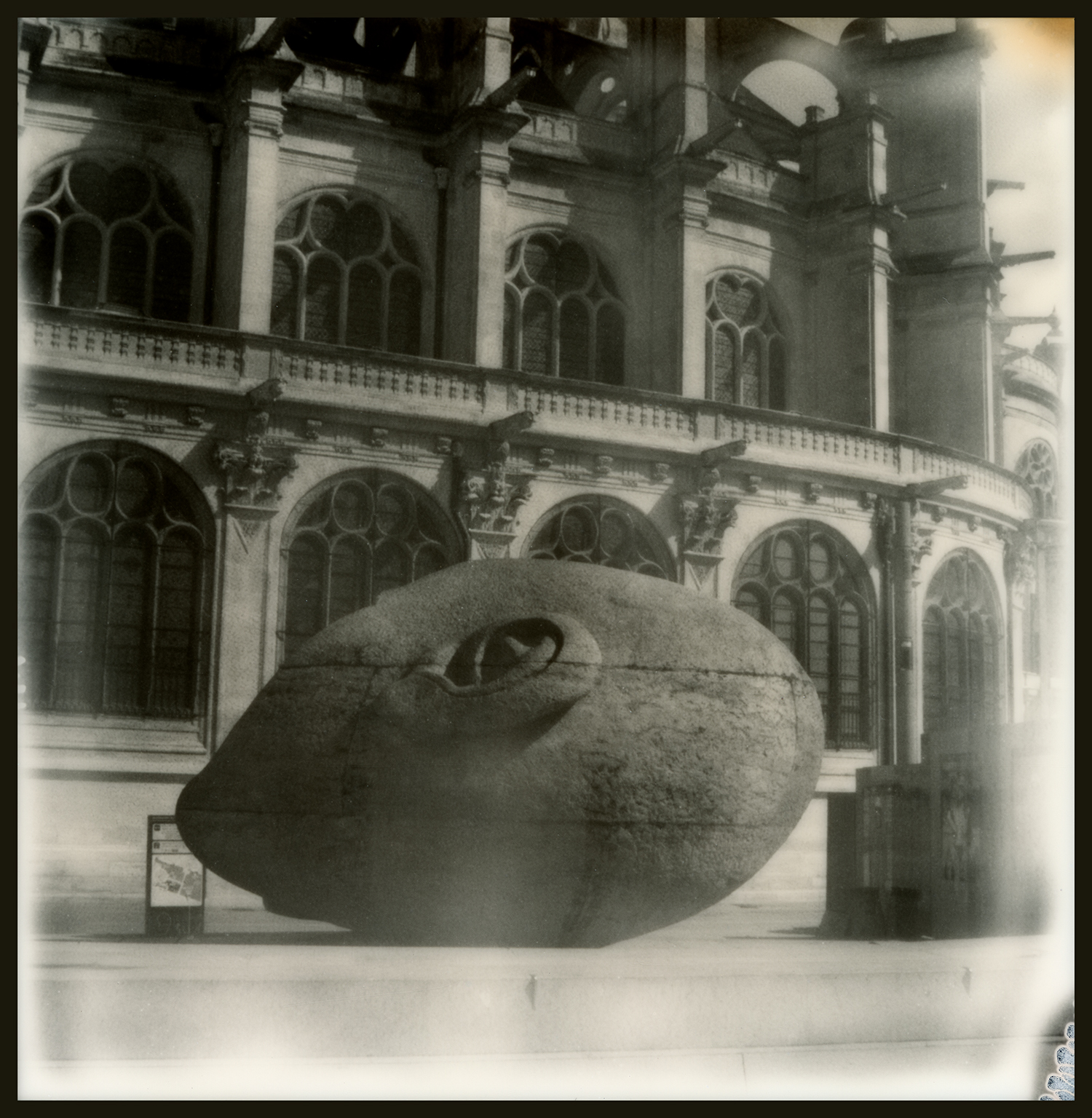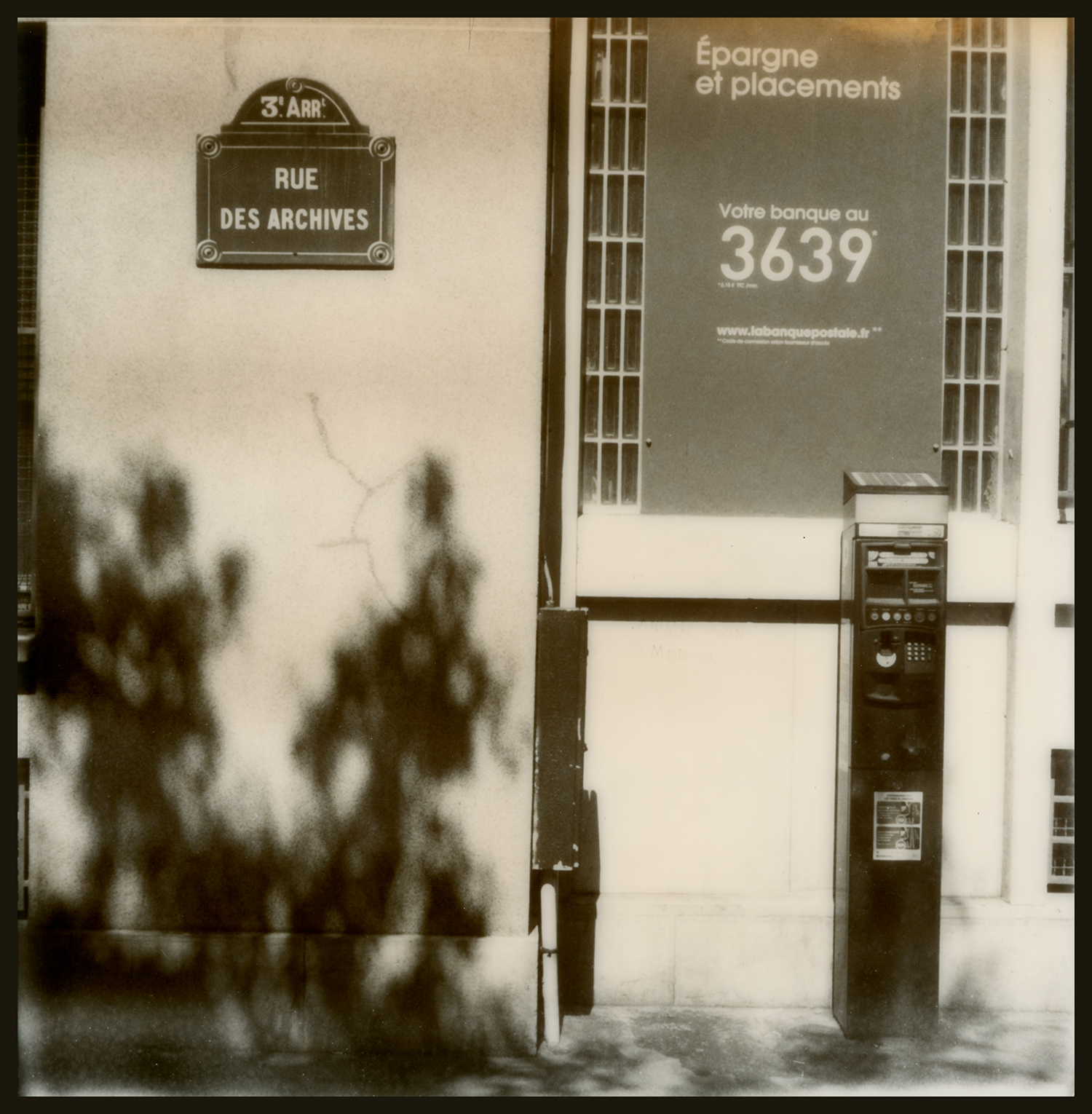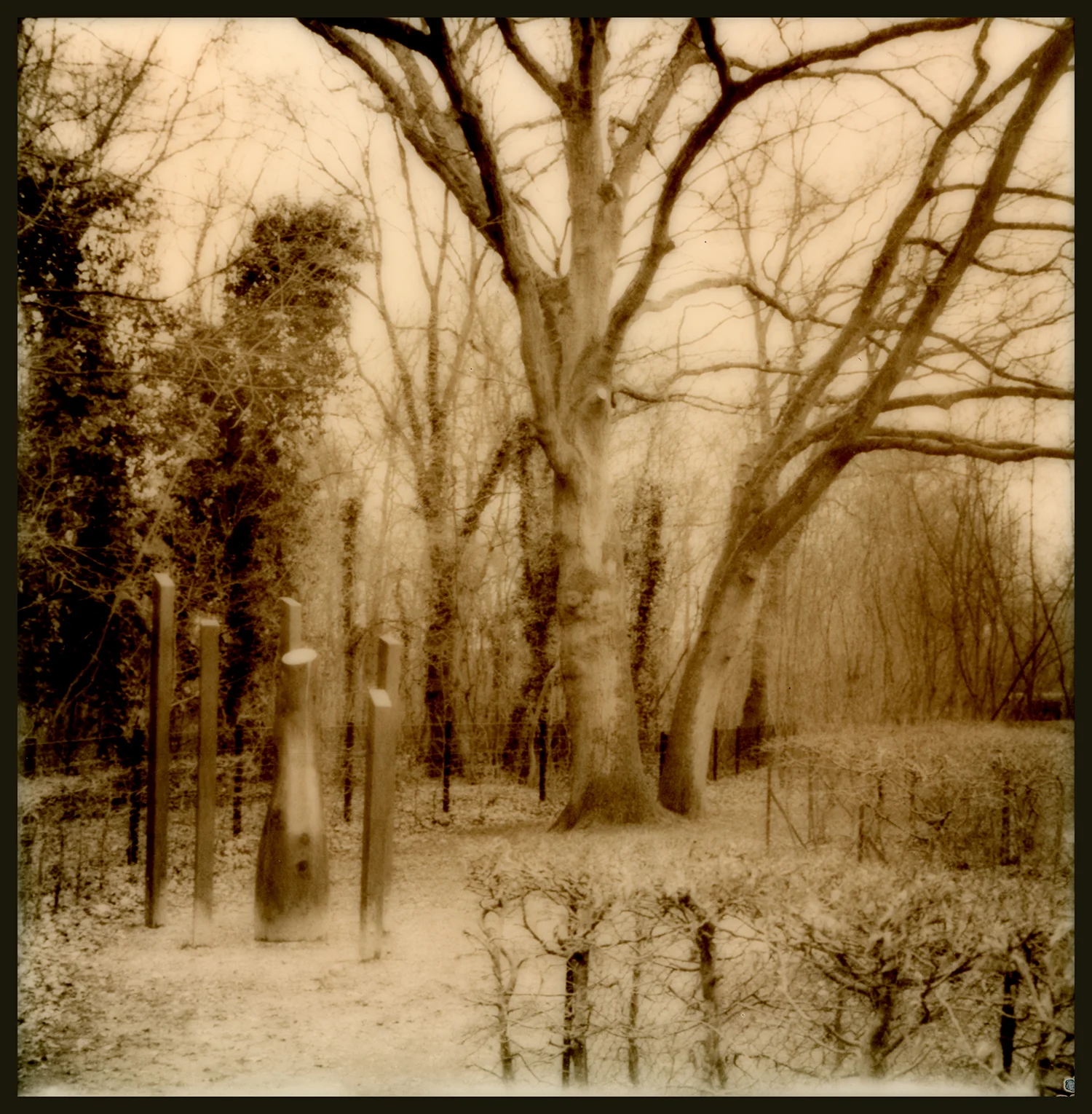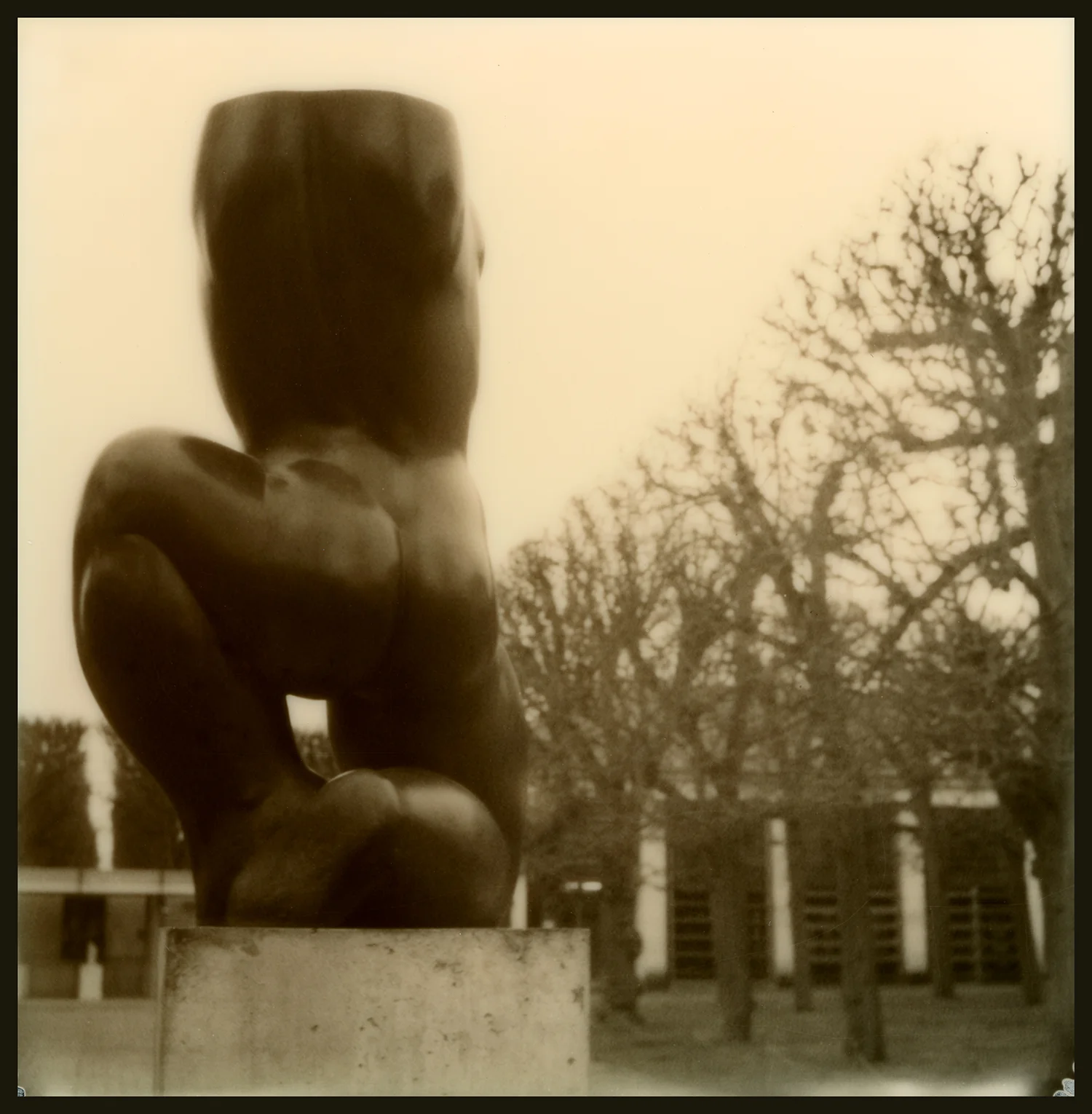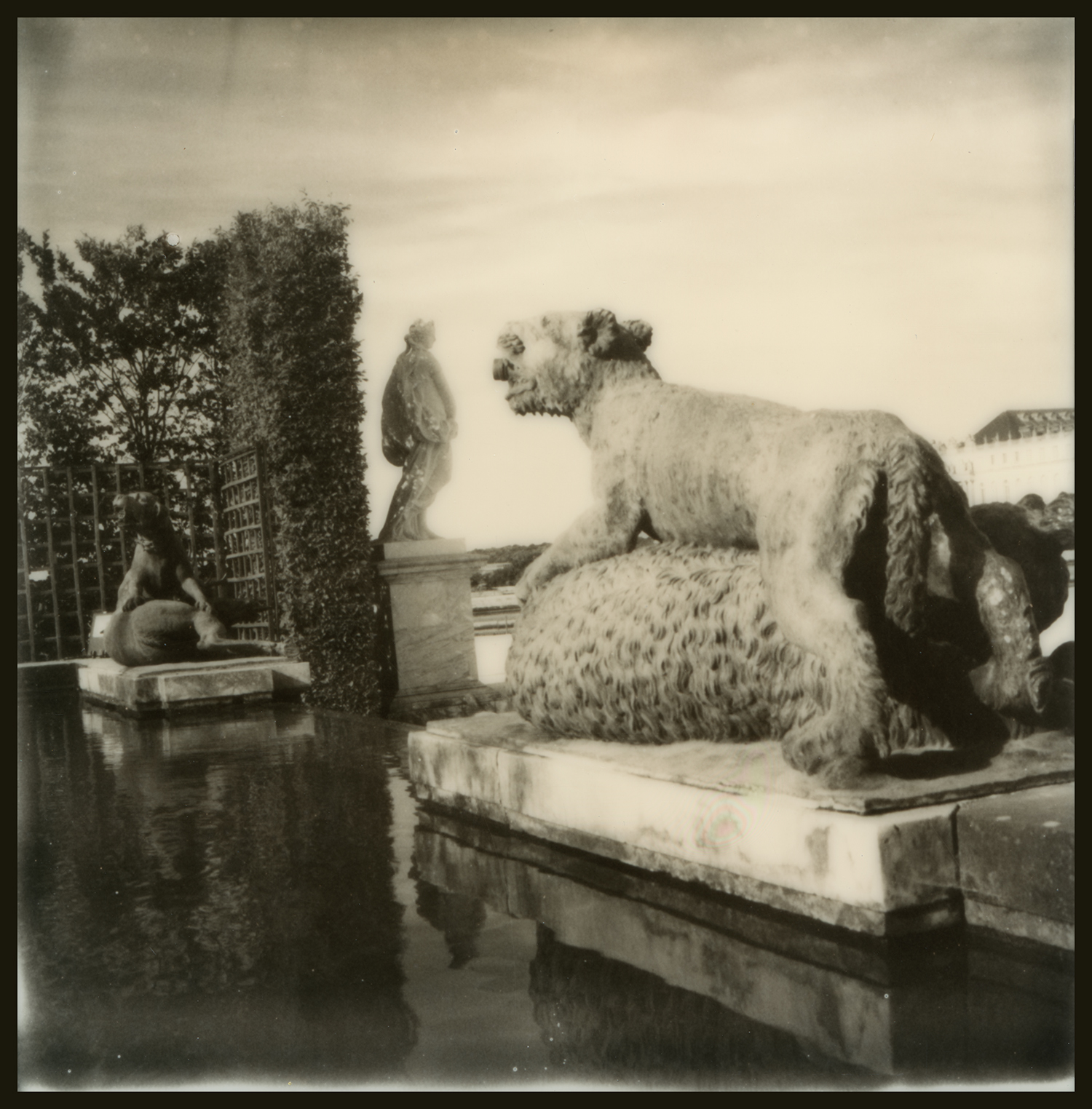Concerning Eugene Atget, I think John Szarkowski put it best: “…he practiced photography not to express what he knew and felt, but to discover what he might know and feel.” This series began when I asked my students a question: How and what might Eugene Atget photograph in the Paris of today? What would he find to form into a photograph that would resonate with the mystery and emotion of those pictures he made in his old age?
One smarty-pants responded, "you're the professor, you're old, what do you think?" So, I thought.
In 2015 I began visiting Paris every year with my 1976-vintage Polaroid SX-70 camera, and the notoriously (and wonderfully) unpredictably foggy, stain-prone, color shifting, Impossible Black & White film, as the Ghost of Atget, an impossibly presumptuous role, I know. Through over 700 Polaroids in those years, I’ve tried to discover what I might know and feel as I reflected on what he knew, and felt.
This is not a re-photographic survey of Atget (Christopher Rauschenberg did that well). It has been for me (as Szarkowski described the struggle for contemporary artists with “tradition”) the kind of hand-to-hand combat that is the hallmark of working out for oneself the problems that an earlier artist has addressed, and coming up with answers that are true not to them, but to oneself.
En francais.
En ce qui concerne Eugene Atget, je pense que John Szarkowski a bien résumé les choses: «… il a pratiqué la photographie non pour exprimer ce qu'il savait et ressentait, mais pour découvrir ce qu'il pourrait savoir et ressentir.» Cette série a commencé lorsque j'ai posé à mes élèves une question: qu'Eugene Atget pourrait-il photographier dans le Paris d'aujourd'hui? Que trouverait-il pour former une photographie qui résonne avec le mystère et l'émotion de ces images qu'il a faites dans sa vieillesse? Un smarty-pants répondit: "Tu es le professeur, tu es vieux, qu'en penses-tu?" Donc je pensais. En 2015, j'ai commencé à visiter Paris chaque année avec mon appareil photo Polaroid SX-70 datant de 1976 et le film notoirement (et merveilleusement) improbable, brumeux, sujet aux taches, changeant de couleur, Impossible Black & White. En tant que Ghost of Atget, un rôle incroyablement présomptueux. A travers plus de 700 Polaroids au cours de ces années, j’ai essayé de découvrir ce que je pourrais savoir et ce que je pourrais ressentir en réfléchissant à ce qu’il savait et ressentait. Ce n'est pas une étude re-photographique d'Atget (Christopher Rauschenberg l'a bien fait). C’est pour moi (comme Szarkowski a décrit la lutte pour les artistes contemporains avec la «tradition») le genre de combat au corps à corps qui est la marque de la résolution par soi-même des problèmes qu’un artiste précédent a abordés et qui ont été élaborés. réponses qui ne sont pas vraies pour eux, mais pour soi-même.




